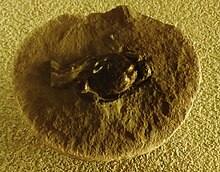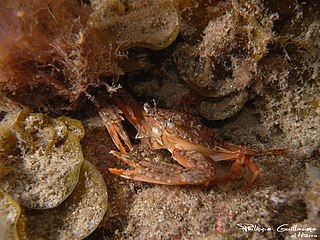
Portunus is a genus of crabs which includes several important species for fisheries, such as the blue swimming crab and the Gazami crab. Other species, such as the three-spotted crab are caught as bycatch.

Mary Jane Rathbun was an American zoologist who specialized in crustaceans. She worked at the Smithsonian Institution from 1884 until her death. She described more than a thousand new species and subspecies and many higher taxa.

Chionoecetes is a genus of crabs that live in the northern Pacific and Atlantic Oceans.

Xanthidae is a family of crabs known as gorilla crabs, mud crabs, pebble crabs or rubble crabs. Xanthid crabs are often brightly coloured and are highly poisonous, containing toxins which are not destroyed by cooking and for which no antidote is known. The toxins are similar to the tetrodotoxin and saxitoxin produced by puffer fish, and may be produced by bacteria in the genus Vibrio living in symbiosis with the crabs, mostly V. alginolyticus and V. parahaemolyticus.
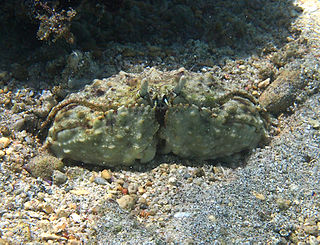
Calappa is a genus of crabs known commonly as box crabs or shame-faced crabs. The name box crab comes from their distinctly bulky carapace, and the name shame-faced is from anthropomorphising the way the crab's chelae (claws) fold up and cover its face, as if it were hiding its face in shame.

The Ocypodidae are a family of semiterrestrial crabs that includes the ghost crabs and fiddler crabs. They are found on tropical and temperate shorelines around the world.

The Somali elephant shrew or Somali sengi is a species of elephant shrew in the family Macroscelididae.
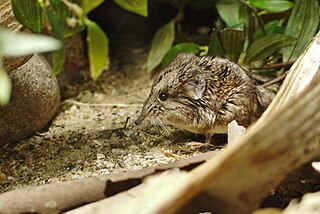
The round-eared elephant shrew or round-eared sengi, is a species of elephant shrew (sengi) in the family Macroscelididae. It is found in Botswana, Namibia, and South Africa. Its natural habitats are subtropical or tropical dry shrubland, and grassland, and hot deserts. They eat insects, shoots, and roots. Their gestation period is 56 days.

Potamonautes is a genus of African freshwater crabs in the family Potamonautidae. It is both the most widespread and most diverse genus of African freshwater crabs, including more than half the species of this continent. They are found in most freshwater habitats of the African mainland and some species are semi-terrestrial.

The grey-faced sengi is a species of elephant shrew that is endemic to the Udzungwa Mountains of south-central Tanzania. The discovery of the species was announced in January 2008; only 15 species of elephant shrew were known until then, and the last discovery was made more than 120 years ago. As the name implies, the species is characterised by a distinctive grey face and a black rump, as well as being larger than the other species of elephant shrews.
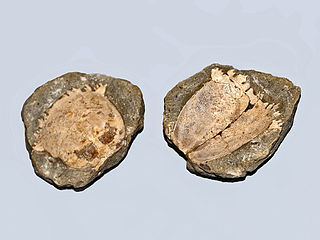
Ranina is a genus of crabs belonging to the family Raninidae.

Paguristes is a genus of hermit crab in the family Diogenidae. It includes the following species :
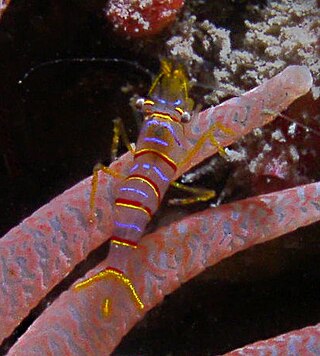
Lebbeus is a genus of shrimp in the family Thoridae. It includes a species whose name was auctioned in 2009 to raise funds for conservation; Luc Longley won with a bid of A$3,600. He named the shrimp Lebbeus clarehannah. The following species are included:

Hepatus is a genus of crabs in the family Aethridae, containing seven extant species, plus some fossil species:

Linuparus, the spear lobsters, is a genus of medium-sized to large spiny lobsters in the family Palinuridae. It contains four extant species found at depths of 30–500 m (100–1,640 ft) in the Indo-Pacific, and 32 fossil species, ranging from the Early Cretaceous to the Oligocene. L. trigonus is the only extant species also known from the fossil record.

Acanthaxius is a genus of mud lobster native to the Indo-Pacific oceans. It has a slender rostrum which is longer than the eyestalks, is spinose and has seven spines and has a depth range of 228–438 metres (748–1,437 ft).

Calappilia is an extinct genus of box crabs belonging to the family Calappidae. The type species of the genus is Calappilia verrucosa.

Hirsutodynomene is a genus of crabs in the family Dynomenidae. All species in this genus except the newest one belonged to the genus Dynomene. These two genera form the subfamilia Dynomeninae. The type species of this genus is: Dynomene spinosa(Rathbun, 1911).
Randallia is a genus of true crabs in the family Leucosiidae. There are about 17 described species in Randallia.
